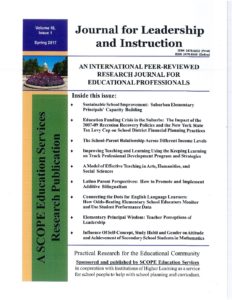2017 Connecting the Dots for ELLs
Findings from a multiple case study investigating the nature of educators’ approaches toward monitoring English language learners (ELLs) performance and using data to improve instruction and apply appropriate interventions.
This article reports on findings from a multiple case study investigating the nature of educators’ approaches toward monitoring English language learners’ (ELL) performance and using data to improve instruction and apply appropriate interventions. Six New York elementary schools where ELLs’ performance was better than predicted (i.e. odds-beating) based on student assessment data were studied. The analysis revealed that several strategies were common among the schools studied and were associated with the schools’ better ELL performance outcomes. These include: (1) connecting instruction and interventions to “real time” data based on multiple measures of student performance including benchmark and formative assessments; (2) communicating performance via technology among teachers and with family members and legal guardians; (3) collaborating through routines among teaching and support staff as well as school and district leaders. Implications for district and school leaders and teachers are discussed. Implications for district and school leaders as well as teachers and other instructional specialists are offered.

